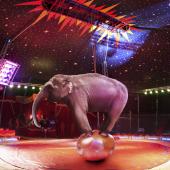Castells
Castells are impressive human towers that you get to see on many festivals and celebrations in the Spanish Catalonia. What may appear strange for many, is a traditional ritual for the Catalans which expresses their solidarity to each others. We take a closer look at this tradition.
In the 17th century the first castells emerged. This was associated from the very beginning with the economic and social situation of the Catalans. In Valls the first Catalan dances figures are to be incurred. The actors call themselves "Castel Lars". And the reason for the everlasting competition was to see, who could show the best and most beautiful figures. Thus groups emerged who sought to outdo each others. These groups, the "Colles Castellares", from year to year built higher and even more complicated castells. Most of them were men who stood further down the human pyramid. Women got up on them and then formed the tops of castells. Also for clothes the women were in charge ever since. The clothes had to be tight-fitting, yet colorful.
The golden age of castells was the 19th century. At the festivals of Valls, Alt Camp and Tarragona castells were the main attraction. During Franco-time people pyramids were temporarily banned. However, this did not prevent people to keep continuing with their tradition. Nine-story castells were already built in 1851. Today at castell championships in Catalonia up to ten floors are expected by the very best Colles Castellares.
The word castell means castle. In case a Colles Castellares builds a castell of two people per level, then one refers to a so-called "Torre". By contrast, one speaks of the "Pilar" when a castell is constructed of only one person per level. In Catalonia, this tradition is still celebrated in individually created competitions or performed as attractions at town festivals. If you are in Catalonia on a visit you absolutely should attend such events. They are true spectacles.




